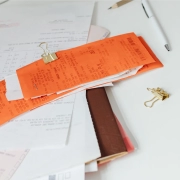In early July all three stages of the Government’s personal income tax plan passed through Parliament and are now law. The amendments to the legislation are as follows:
- The income tax rate thresholds to be progressively increased in the 2018–2019, 2022–2023 and 2024–2025 income years.
- The introduction of a new low and middle income tax offset from the 2019 income year; until the 2022 income year.
- Merge the new low and middle income tax offset with the existing low income tax offset from the 2023 income year.
The personal tax changes mean a tax saving of $855 for someone on an annual taxable income of $45,000 per annum until 2022, then $1,080 until 2024 onwards (check the tax relief calculator).
| TAX THRESHOLDS | |||
| Tax rate | From 1 July 2018 | From 1 July 2022 | From 1 July 2024 |
| 0% | $0–$18,200 | $0–$18,200 | $0–$18,200 |
| 19% | $18,201–$37,000 | $18,201–$45,000 | $18,201–$45,000 |
| 30% | $45,001–$200,000 | ||
| 32.5% | $37,001–$90,000 | $45,001–$120,000 | |
| 37% | $90,001–$180,000 | $120,001–$180,000 | |
| 45% | > $180,000 | > $180,000 | > $200,000 |
| Low Middle Income Tax Offset | Up to $1,080 | ||
| Low Income Tax Offset | Up to $445 | Up to $700 | Up to $700 |
But let’s explain this a bit easier to understand.
The recent income tax cuts that passed through Parliament do not mean everyone automatically gets $1,080 back from the Government as soon as they lodge their income tax return.
The Australian Taxation Office (ATO) has been inundated with calls from taxpayers wanting to know where their money is and how they can access the $1,080 they now believe is owing to them.
What changed?
From 1 July 2018
A low and middle income tax offset (LMITO), first introduced in the 2018–19 Federal Budget, provides a tax benefit to those with taxable incomes below $125,333. Recent changes increase the LMITO from a maximum of $530 to $1,080 and the base amount from $200 to $255, and make it applicable to a greater number of taxpayers by increasing the threshold from $125,333 to $126,000.
The first thing to remember is that this is a tax offset; you need to owe tax to offset the tax. And, if you owe tax, the offset will be first used to reduce the tax you owe. It is not a cash back – a point the ATO is at pains to point out stating on its website that, “It doesn’t mean that you will get an extra $1,080 in your tax return.”
The offset applies for a limited time. In this case, the offset applies to the 2018–19, 2019–20, 2020–21 and 2021–22 income years. So, if you are eligible to receive the offset, it applies to the taxable income you earned last financial year (2018–19) and you will receive any offset owing once you have lodged your tax return.
| Taxable income* | Offset minimum | Offset maximum |
| <$37,000 | $255 | $255 |
| >$37,000–<$48,000** | $255 | $1,080 |
| >$48,000–<$90,000 | – | $1,080 |
| >$90,000–<$126,000*** | – | $1,080 |
| $126,000+ | $0 | $0 |
* Your taxable income is the income you earn less any deductions you claim – not your salary.
** offset entitlement is $255, plus 7.5% of the excess to a maximum of $1,080.
*** offset entitlement is $1,080, less 3% of the excess on taxable income above $90,000.
If you earned taxable income in 2018-19 of:
- Less than $21,885: while you have an entitlement to LMITO of $255, you do not pay personal income tax and therefore cannot utilise the offset.
- $45,000: you will receive a tax reduction of $855 ($255 plus 7.5% on every dollar between $37,000 and $45,000, in this case $8,000). You may also be eligible for the low income tax offset (LITO), see below.
- $85,000: you will receive a tax reduction of $1,080.
The LMITO is in addition to the existing low income tax offset (LITO). The LITO is available to those with taxable income of less than $66,667. The maximum offset is $445 for those with taxable incomes of $37,000 or less. Any amount you earn above $37,000 up to the threshold of $66,667 reduces the offset by 1.5%. Once again, the LITO is a tax offset to reduce the amount of tax you pay. If you do not pay personal income tax, you do not receive the offset as a cash refund.
From 1 July 2022
Two things occur from 1 July 2022:
- Income tax rate thresholds change – the top threshold of the 19% personal income tax bracket increases to $45,000 (currently $37,000), effectively providing a tax cut to all taxpayers earning over $18,200. The tax rate change applies to resident taxpayers and working holiday makers.
- The low-income tax offset (LITO) increases – for those with taxable income of less than $66,667, the LITO base amount will increase from $445 to $700. However, the LITO will reduce quicker than it currently applies with amounts above $37,500 reducing by 5% for amounts up to $45,000, then 1.5% to $66,667.
These changes assume that the Government does not pare back the income tax changes in a future Budget.
From 1 July 2024
From 1 July 2024, the 32.5% marginal tax rate will reduce to 30% and the number of taxpayers it applies to will increase with the maximum threshold moving from $120,000 to $200,000. The tax rate change applies to resident taxpayers and working holiday makers. Once again, this assumes that this tax rate and threshold change is not amended in a future Federal Budget.
Want to receive information like this in your inbox?
Sign up to our monthly newsletter here to receive due dates, news, tax tips and other important things that we think are useful.











